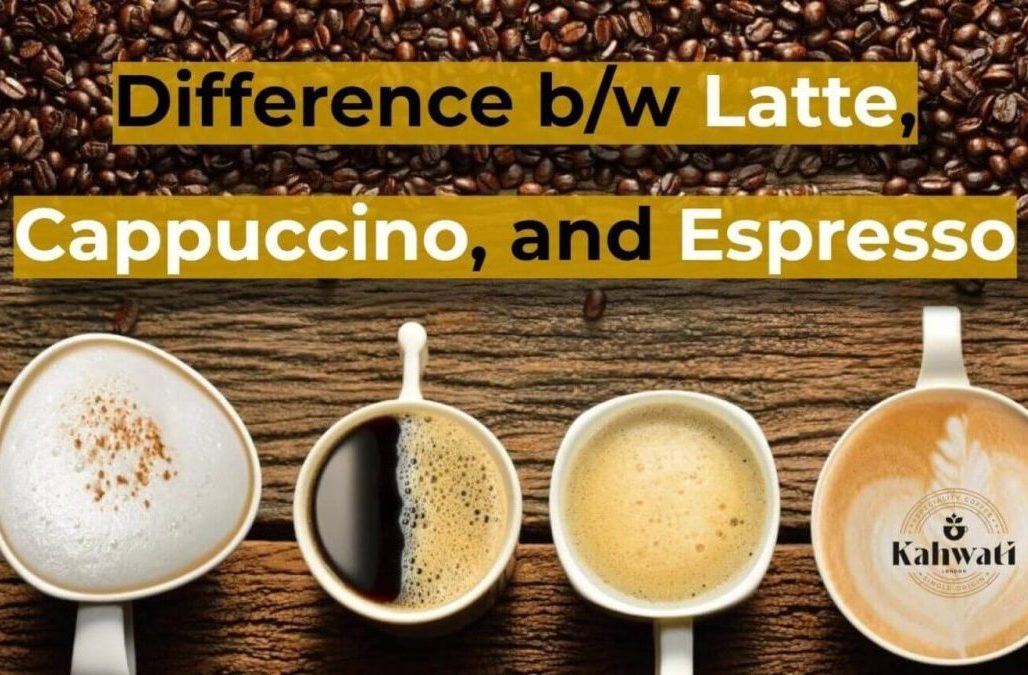In the world of coffee enthusiasts and casual sippers alike, choosing between a cappuccino and a latte often emerges as a quintessential conundrum. These two iconic espresso-based beverages have graced menus and delighted palates for generations, but their distinctions and nuances continue to bewilder many. Beyond the simple contrast in foam and milk ratios lies a tale of contrasting traditions, brewing methods, and taste experiences that have shaped the coffee culture we know today.
As we embark on this caffeinated journey, we will uncover the origins of these beloved beverages, tracing their roots back to the bustling streets of Italian cities. The Difference between cappuccino VS latte showcase espresso as their foundation and have evolved to reflect cultural preferences and culinary influences. From Italy’s vibrant espresso culture to the global phenomenon of coffeehouse chains, these drinks have etched their mark on menus worldwide.
But our exploration doesn’t end at the surface-level comparison of foam and milk. We’ll venture deeper into the art of espresso extraction, exploring how the fineness of the grind and the brewing process impact the flavours that dance upon your taste buds. With each sip, you’re savouring the culmination of baristas’ skills and brewing science.
So, whether you find yourself leaning toward the bold simplicity of a cappuccino or the creamy allure of a latte, join us in this expedition through the coffee landscape. Together, we will unravel the mysteries of these two espresso classics, gaining a newfound appreciation for the artistry that turns a simple bean into a symphony of flavours.
Difference between Cappuccino VS Latte:
What is a Cappuccino?
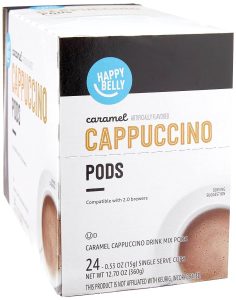
A cappuccino is a meticulously crafted espresso-based coffee beverage renowned for its distinctive three-part composition of equal parts espresso, steamed milk, and milk fluff. The cappuccino is celebrated for its harmonious blend of flavours and contrasting textures, creating a sensory delight for coffee enthusiasts.
To prepare a cappuccino, a shot or two of espresso is extracted, serving as the robust foundation of the drink. Warmed to the ideal temperature, steamed milk is gently introduced in an amount matching that of the espresso. This addition imparts a velvety smoothness and sweetness that balances the coffee’s bitterness.
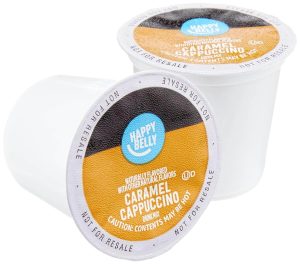
The cappuccino’s flavour profile is a harmonious convergence of the espresso’s boldness, the milk’s sweetness, and the foam’s lightness. Each sip offers a journey from the initial espresso punch to the soothing embrace of the milk, finishing with the delicate foam on the palate.
In essence, a cappuccino is more than a coffee drink—it’s a work of art that pays homage to the artistry of espresso extraction, milk steaming, and foam creation. Its balance in flavour and composition is a testament to the craftsmanship that defines the world of speciality coffee.
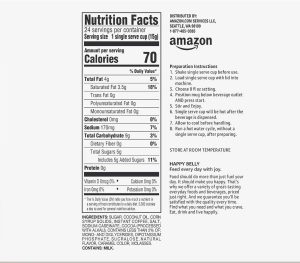
What a Cappuccino Made Up Of?
A cappuccino comprises a precise and distinct combination of espresso, steamed milk, and foam. This espresso-based coffee beverage is known for its layered presentation and balanced interplay of flavours and textures. Here’s a breakdown of the components of a cappuccino:
- Espresso: A cappuccino starts with one or two shots of espresso, a concentrated coffee brewed by forcing hot water through finely-ground coffee beans. The espresso forms the drink’s base, providing its robust coffee flavour.
- Steamed Milk: Steamed milk is an integral part of a cappuccino. The milk is heated and aerated using steam, creating a creamy and smooth texture. The steamed milk adds sweetness and richness that complements the intensity of the espresso.
- Milk Foam: The defining characteristic of a cappuccino is its thick layer of milk foam. The milk foam is created by frothing the milk using steam, resulting in a dense and velvety foam. The foam sits atop the steamed milk and espresso layers, contributing a creamy texture and a visually appealing presentation.
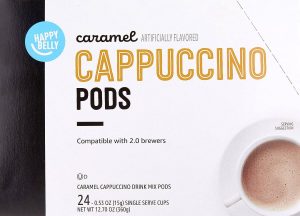
The preparation involves brewing the espresso shots and then carefully layering the steamed milk and foam on top of the espresso. The cappuccino’s layered appearance showcases its artful construction. It offers a unique experience where each sip encompasses the boldness of coffee, the creaminess of milk, and the frothy lightness of foam.
A cappuccino is a finely crafted coffee drink with espresso, steamed milk, and milk fluff. Its balanced flavours and textured layers make it a classic choice for those seeking a harmonious coffee experience.
What is a Latte?
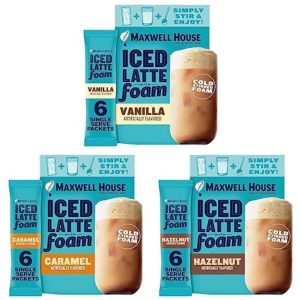
A latte, derived from the Italian “caffè latte,” is a popular espresso-based coffee beverage characterized by its creamy and indulgent composition of espresso and steamed milk. This beloved drink offers a smoother and milder coffee experience than more concentrated espresso shots.
To create a latte, a shot of espresso is extracted and combined with a more significant portion of steamed milk. The result is a delightful harmony between the rich coffee notes of the espresso and the silky texture of the milk. Unlike more vital espresso shots, a latte’s gentle flavour profile allows the inherent nuances of the coffee to meld seamlessly with the milk’s sweetness.

A latte is known for its velvety texture, which arises from the steamed milk’s frothy consistency. While the latte lacks the layered presentation of a cappuccino, its smooth and uninterrupted blend of espresso and milk offers a comforting and approachable coffee experience.
In summary, a latte embodies the harmony between coffee and milk. Its subtle coffee flavours, enhanced by the creaminess of steamed milk, make it a popular choice for those seeking a gentler coffee experience that balances the boldness of espresso with the comfort of milk.
What is a Latte Made Up Of?
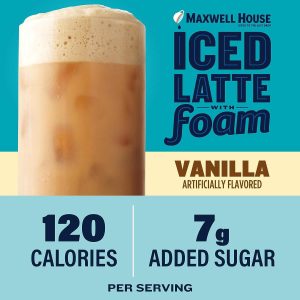
A latte, short for “caffè latte” in Italian, comprises a simple yet delicious combination of espresso and steamed milk. The drink’s straightforward composition allows the flavours of the coffee and milk to come together harmoniously. Here’s a breakdown of the components of a latte:
- Espresso: A latte starts with one or two shots of espresso, a concentrated coffee brewed by forcing hot water through finely-ground coffee beans. The espresso serves as the base flavour and strength of the drink.
- Steamed Milk: Steamed milk is the primary component that gives a latte its creamy and smooth texture. Milk is heated and aerated using steam, creating a velvety consistency. The steamed milk provides a counterbalance to the espresso’s bitterness and adds a touch of sweetness.
- Optional Foam: While a latte doesn’t traditionally have a thick layer of foam like a cappuccino, a slight layer of milk foam can still be present, depending on the technique used to steam the milk. This foam contributes to the overall texture of the latte, offering a gentle contrast to the espresso and milk.
The preparation involves pouring the espresso into a cup and then adding the steamed milk, ensuring a harmonious blend of coffee and milk flavours. The result is a comforting and milder coffee experience, making lattes a popular choice for those who enjoy the balance between coffee’s richness and milk’s creaminess.

Differences Between a Latte and Cappuccino
A latte and a cappuccino are both espresso-based coffee beverages. Still, they differ significantly in their composition, milk-to-espresso ratio, milk foam, texture, and overall taste experience. Here’s a breakdown of the key differences between a latte and a cappuccino:
Latte:
- Composition: A latte primarily comprises espresso and a more significant amount of steamed milk.
- Milk-to-Espresso Ratio: Lattes have a higher milk-to-espresso ratio, resulting in a milder coffee flavour.
- Milk Foam: Lattes typically have a minimal layer of milk foam that covers the top of the milk.
- Texture: Lattes have a creamier and smoother texture due to the abundance of steamed milk.
- Presentation: Lattes usually lack the distinct layered presentation found in cappuccinos.
- Taste: Lattes offer a balanced and gentle coffee flavour, with the milk providing a noticeable sweetness.
Cappuccino:
- Composition: A cappuccino comprises equal parts espresso, steamed milk, and foam.
- Milk-to-Espresso Ratio: Cappuccinos have a lower milk-to-espresso ratio than lattes, resulting in a bolder coffee flavour.
- Milk Foam: Cappuccinos are characterized by a thick and dense layer of milk foam that covers the top of the drink.
- Texture: Cappuccinos have a frothy and airy texture due to the abundance of milk foam.
- Presentation: Cappuccinos have a distinctive layered presentation with espresso at the bottom, steamed milk in the middle, and foam on top.
- Taste: Cappuccinos offer a more robust and intense coffee flavour, with the milk foam adding a rich creaminess.
In summary, a latte is known for its creamy and smooth texture, milder coffee flavour, and lack of distinct layers. At the same time, a cappuccino features a bold coffee taste, a thick layer of milk foam, and a layered presentation. Your preference will depend on your desired coffee strength, milkiness, and overall texture experience.
Cappuccino VS Latte:
Here’s a concise comparison between a cappuccino and a latte:
Cappuccino:
- Espresso-based coffee drink.
- Equivalent parts espresso, steamed milk, and milk foam.
- Bold and intense coffee flavour.
- Thick and dense milk foam on top.
- Distinct layered presentation.
- Frothy and airy texture.
- Typically has a more pungent coffee taste.
Latte:
- Espresso-based coffee drink.
- Espresso and a more significant amount of steamed milk.
- Milder coffee flavour due to higher milk content.
- Minimal milk foam on top.
- Creamy and smooth texture.
- No distinct layered presentation.
- It usually has a balanced coffee taste with sweetness from the milk.
Choose a cappuccino for a strong coffee punch with dense foam or a latte for a smoother, milk-forward experience. Your preference will depend on your taste for coffee intensity and texture.
Which is Better? Cappuccino vs Latte
Choosing between a cappuccino and a latte depends on individual preferences and what you want in a coffee experience. Each drink has unique qualities that cater to different tastes. Here’s a breakdown of factors to consider:
Cappuccino:
- More robust Coffee Flavor: Cappuccinos have a bolder coffee flavour due to the equal parts of espresso and milk. The milk foam also adds a layer of richness to the taste.
- Layered Presentation: Cappuccinos are known for their visually appealing three-layered espresso, steamed milk, and foam presentation.
- Texture: The dense milk foam in a cappuccino provides a frothy and creamy texture.
- Intensity: A cappuccino might be your choice if you prefer a stronger coffee taste and a more textured beverage.
Latte:
- Creamier and Milder: Lattes are creamier and have a milder coffee flavour due to the higher proportion of steamed milk.
- Smooth Texture: The emphasis on steamed milk results in a smooth and velvety texture.
- Balanced Taste: Lattes balance the espresso’s richness and the milk’s sweetness.
- Comforting: If you enjoy a smoother coffee experience that’s not too intense, a latte could be your preference.
Ultimately, neither is inherently better; it’s about what suits your taste and mood. A cappuccino might be your go-to if you’re looking for a stronger coffee kick with a textured feel. If you lean towards a creamier and milder option, a latte could be more up your alley. Experiment with both to discover which one aligns with your coffee preferences.
Conclusion:
In the realm of coffee enthusiasts, the debate between cappuccino and latte may never find a definitive resolution, and perhaps that’s the beauty of it. The world of coffee is as diverse as the individuals who enjoy it, and the choice between these two beloved beverages ultimately boils down to personal preferences and moments of craving.
As we bid farewell to our exploration of the cappuccino and latte duel, let’s remember that beyond the layers of espresso, milk, and foam lies a shared heritage that unites coffee lovers across the globe. The rich history, cultural significance, and intricate crafting of these beverages remind us that each cup of coffee results from a legacy handed down through generations.
Whether you find solace in the delicate balance of a cappuccino’s foam and espresso or seek comfort in the velvety embrace of a latte’s steamed milk, you’re partaking in an experience that encapsulates tradition and innovation. The modern coffee landscape has evolved to offer myriad interpretations, from creative flavour infusions to artistic latte art, catering to the evolving tastes of a diverse audience.
So, as you take your last sip from your cup of choice, remember that the journey of exploration doesn’t end here. The world of coffee is ever-evolving, with new trends and techniques waiting to be discovered. Whether you find yourself at an intimate café in Italy or a bustling coffeehouse in a metropolitan city, the cappuccino and latte will continue to reign as pillars of the coffee culture, inviting you to indulge in the delightful espresso dilemma time and time again.
FAQs:
Here are some frequently asked questions that will help you to understand the difference between Cappuccino and Latte.
What is the difference among a latte and a cappuccino?
The key differences between a latte and a cappuccino lie in their composition, ratios of espresso, milk, and foam, as well as their quality and overall taste. Here’s a breakdown of these distinctions:
-
Ingredients and Composition:
- Latte: A latte is typically made with one shot of espresso and a more significant amount of steamed milk. The milk-to-espresso ratio is higher in a latte, producing a milder coffee flavour.
- Cappuccino: A cappuccino traditionally comprises equal parts espresso, steamed milk, and foam. This balance creates a more pungent coffee taste compared to a latte.
-
Foam and Texture:
- Latte: The foam in a latte is usually minimal and may only cover the top of the milk. The texture is generally smoother and creamier due to the higher milk content.
- Cappuccino: Cappuccinos are known for their thick and dense milk foam. The milk foam in a cappuccino is abundant and covers the entire top of the drink, creating a distinct layered effect.
-
Presentation:
- Latte: Lattes often have less visual contrast between the milk and espresso layers. They are usually served in taller glasses or cups.
- Cappuccino: Cappuccinos are known for their characteristic three-layer presentation: the bottom layer is espresso, followed by miffed milk, and topped with a layer of milk foam. This layered appearance is a defining feature of a cappuccino.
-
Flavour and Strength:
- Latte: Lattes offer a milder coffee flavour due to the more significant amount of milk. The espresso’s taste is more diluted, and the milk provides a creamy and smooth texture.
- Cappuccino: Cappuccinos have a bolder coffee flavour outstanding to the equivalent parts of espresso and milk. The milk foam adds a layer of frothy richness that complements the espresso’s intensity.
-
Tradition and Culture:
- Latte: Lattes are more modern and are often associated with the rise of coffeehouse chains and speciality coffee culture.
- Cappuccino: Cappuccinos have a strong Italian heritage and are deeply rooted in traditional espresso culture. The name “cappuccino” is derived from the Capuchin friars’ brown robes, resembling the drink’s colour.
Which is sweeter a cappuccino or latte?
Generally, a latte is considered sweeter than a cappuccino. The higher ratio of milk in a latte, along with its creamier texture, contributes to a naturally sweeter taste that can slightly mellow the intensity of the espresso.
In contrast, the equal parts of espresso and milk in a cappuccino and its dense milk foam create a more robust coffee flavour that might be perceived as less sweet than a latte. However, the sweetness can also be influenced by factors such as the type of espresso beans used and any added syrups or flavourings.
Is cappuccino more bitter or latte?
A cappuccino is generally perceived as having a more robust and potentially bitter flavour than a latte. This heightened bitterness in cappuccino results from the equal parts of espresso and milk, with the milk foam helping to accentuate the espresso’s intensity. The balance between the coffee’s boldness and the creamy milk foam can lead to a taste profile that leans towards bitterness.
On the other hand, a latte tends to have a milder flavour due to its higher milk-to-espresso ratio. The more steamed milk in a latte dilutes the coffee’s bitterness, resulting in a smoother and creamier taste.
It’s important to note that personal preferences and the specific espresso beans can influence the perceived bitterness of both beverages. Additionally, the barista’s brewing skills and the beans’ quality can shape the final flavour of a cappuccino or a latte.
Does the latte have milk?
Yes, a latte (short for caffè latte) is a coffee beverage with milk as a primary ingredient. A latte is made with a shot of espresso and more steamed milk. A latte’s milk-to-espresso ratio is higher than other espresso-based drinks like cappuccinos or macchiatos. This results in a milder coffee flavour and a creamier texture due to the existence of steamed milk.
The milk in a latte contributes to its smooth and velvety consistency, making it a popular choice for those who enjoy a more milk-forward coffee experience.
Which coffee has the most milk?
Among the popular espresso-based coffee drinks, a latte has the most milk. A latte is primarily made up of steamed milk, with a small amount of espresso added to it. A latte’s milk-to-espresso ratio is higher than other drinks like cappuccinos or macchiatos. This abundance of milk gives the latte a creamy and smooth texture, resulting in a milder coffee flavour.
If you’re looking for a coffee beverage with a significant amount of milk, a latte would be the one to choose.
What’s a macchiato vs latte?
A macchiato and a latte are both espresso-based coffee drinks, but they differ significantly in their composition, flavour, and presentation. Here’s how they compare:
Macchiato:
- Espresso Focus: The word “macchiato” means “stained” or “spotted” in Italian. In a macchiato, the focus is on the espresso, with just a small amount of milk or milk foam “staining” or “marking” the espresso.
- Varieties: There are two main types of macchiatos:
- Espresso Macchiato: This version consists of a shot of espresso with a small dollop of milk foam on top. The milk adds a touch of creaminess while allowing the espresso’s flavour to shine through.
- Latte Macchiato: This is the reverse of the traditional macchiato. It’s made by pouring steamed milk into a glass, followed by a shot of espresso—the milk “stains” the espresso, creating distinct layers.
Latte:
- Milk Emphasis: A latte, short for “caffè latte” in Italian, translates to “milk coffee.” It features more milk than espresso, resulting in a creamy and smoother texture.
- Composition: A latte typically contains a shot of espresso and a more significant amount of steamed milk. The milk-to-espresso ratio in a latte is significantly higher than in a macchiato.
- Flavour and Texture: Due to the abundance of milk, a latte has a milder coffee flavour and a velvety consistency. It’s often associated with a more milk-forward taste experience.
In summary, a macchiato focuses on the espresso, with just a touch of milk or foam. At the same time, a latte emphasizes milk, resulting in a creamier and more diluted coffee flavour. Your choice will be contingent on whether you choose a more intense espresso taste (macchiato) or a smoother and milkier experience (latte).
Does a latte have sugar?
A traditional latte does not contain sugar as an inherent ingredient. A latte primarily comprises espresso and steamed milk with no added sweeteners. However, if you prefer your latte to be sweet, you can add sugar, syrups, flavored creams, or other sweeteners to customize the taste.
Many coffee shops offer flavoured syrups that can be added to lattes, allowing you to create a sweet latte with flavours like vanilla, caramel, or hazelnut. Remember that adding sweeteners will alter the original flavour profile of the latte.
What is a mocha vs latte?
A mocha and a latte are popular espresso-based coffee drinks but differ in their ingredients, flavour, and overall experience. Here’s a comparison between the two:
Mocha:
- Ingredients: A mocha combines espresso, steamed milk, and chocolate. It typically includes cocoa powder, chocolate syrup, or melted chocolate mixed with espresso and milk.
- Flavour Profile: Mochas have a rich and indulgent flavour due to adding chocolate. The mixture of coffee and chocolate creates a sweet and sometimes slightly bitter taste, depending on the type of chocolate used.
- Texture: Similar to a latte, a mocha features a creamy texture due to the steamed milk. The chocolate adds a layer of smoothness to the drink.
Latte:
- Ingredients: A latte, short for “caffè latte,” consists of espresso and steamed milk. It does not inherently contain chocolate or any other flavourings.
- Flavour Profile: Lattes have a milder coffee flavour than mochas since they primarily highlight the combination of espresso and milk. The absence of added flavours allows the natural characteristics of the espresso to come through.
- Texture: Lattes are known for their creamy and velvety texture due to the steamed milk. The emphasis is on the balance between coffee and milk.
In summary, a mocha is a coffee drink that includes espresso, steamed milk, and chocolate, resulting in a sweet and chocolatey flavour profile. Conversely, a latte features espresso and steamed milk, allowing the coffee’s inherent flavours to shine through with a milder taste. Your choice between a mocha and a latte will depend on whether you’re in the mood for the rich sweetness of chocolate or a more straightforward coffee experience.
Which is healthier, latte or cappuccino?
A cappuccino is generally considered a slightly healthier option between a latte and a cappuccino. However, it’s important to note that the healthiness of these drinks depends on various factors, including portion size, the type of milk used, and any additional flavourings or toppings.
Latte:
- A latte holds more milk than a cappuccino, which can donate to its calorie and fat content.
- A latte can have higher levels of saturated fat and calories if made with whole milk.
- However, you can opt for alternatives like skim or plant-based milk to reduce the calorie and fat content.
Cappuccino:
- A cappuccino has equal parts of espresso, steamed milk, and foam.
- The milk foam in a cappuccino adds volume without significantly increasing the calorie count.
- A cappuccino might have a slightly lower calorie content since it has a higher proportion of espresso relative to milk than a latte.
A cappuccino might be preferable for those looking for a slightly lighter option due to its balanced milk-to-espresso ratio. However, overall healthiness also depends on individual dietary preferences and needs. Suppose you’re concerned about calorie intake or fat content. In that case, you can consider choosing skim milk or a plant-based milk alternative and opting for smaller sizes to enjoy these beverages in moderation.
Which is more creamy, latte or cappuccino?
A latte is generally more creamy than a cappuccino. The creaminess of a coffee drink is primarily influenced by the amount of milk used and its texture. Here’s how the two beverages compare in terms of creaminess:
Latte:
- A latte, short for “caffè latte” in Italian, translates to “milk coffee.” As the name suggests, the emphasis is on the milk component.
- Lattes are complete with a shot of espresso and steamed milk. The milk-to-espresso ratio in a latte is significantly higher than in a cappuccino.
- A latte’s abundance of steamed milk contributes to its smooth and creamy texture. The milk creates a velvety consistency that is easy to sip.
Cappuccino:
- A cappuccino contains of equivalent parts espresso, steamed milk, and foam.
- While the milk foam in a cappuccino contributes to a certain level of creaminess, the overall texture is lighter and more bubbly than in a latte.
- The milk foam in a cappuccino tends to be denser and thicker, resulting in a distinct layered effect on the drink’s surface.
In summary, if you’re seeking a coffee beverage with a creamier texture, a latte is more likely to fulfil that preference due to its higher milk content and smoother consistency. The milk foam in a cappuccino creates a different type of texture that is more frothy and less dense.
What flavor is mocha?
Mocha is a coffee beverage that combines the flavours of coffee and chocolate. It typically includes espresso, steamed milk, and chocolate flavouring. The chocolate flavour in a mocha can come from various sources, such as cocoa powder, chocolate syrup, or melted chocolate.
The flavour profile of a mocha is a harmonious blend of the rich, robust taste of coffee and the sweet, indulgent notes of chocolate. The intensity of the coffee’s bitterness and the sweetness of the chocolate creates a balanced and satisfying taste experience.
The chocolate component can vary in intensity, depending on how much chocolate flavouring is added, which allows for customization based on personal preferences. Some variations might lean towards a more pungent chocolate taste, while others maintain a more pronounced coffee flavour.
Overall, a mocha is a general choice for those who enjoy the mixture of coffee and chocolate, offering a delightful and comforting flavour as a comforting treat or a dessert-like coffee option.
What is full-milk coffee called?
Full-milk coffee is typically referred to as “Whole Milk Coffee.” This term indicates that the coffee is prepared using whole milk, which contains more milk fat than lower-fat options like skim milk or 2% milk.
Whole milk contributes to a creamier and richer texture in coffee beverages, as the higher fat content adds body and a smooth mouthfeel to the drink. When ordering coffee with whole milk at a café or coffee shop, you can ask for your preferred coffee drink “with whole milk” to ensure it’s made using this variety.
What is mocha coffee?
A mocha coffee, often called a “mocha,” is a delicious beverage combining espresso and chocolate flavours. It’s a delightful fusion of rich coffee and sweet chocolate, making it a popular choice for those who enjoy blending these two flavours. Here’s how a mocha coffee is typically prepared:
Ingredients:
- Espresso: A mocha starts with a shot of espresso, a concentrated coffee brewed by forcing hot water through finely-ground coffee beans.
- Chocolate: The distinctive feature of mocha is the addition of chocolate flavour. This can be achieved through various means, including cocoa powder, chocolate syrup, or melted chocolate. The chocolate component gives the drink its sweet and indulgent taste.
- Milk: Steamed milk is added to the espresso and chocolate mixture, creating a creamy base for the beverage.
Preparation:
- A shot of espresso is prepared.
- The chocolate element is added to the espresso. This can be achieved by mixing cocoa powder, chocolate syrup, or melted chocolate into the espresso.
- Steamed milk is added to the chocolate espresso mixture, creating a creamy and velvety texture.
- The final mocha is often topped with a dollop of milk foam or whipped cream for added richness and visual appeal.
Flavour Profile: A mocha coffee boasts a balanced flavour profile where the sweetness of the chocolate complements the boldness of the coffee’s bitterness. The combination creates a harmonious taste that appeals to those who enjoy coffee and chocolate. The exact flavour intensity can vary based on the amount of chocolate used and personal preferences.
In summary, mocha coffee is a delightful espresso-based drink that combines the best coffee and chocolate worlds. It offers a sweet and indulgent flavour experience that is perfect for those observing for a treat that combines the richness of chocolate by the sweetness of chocolate.
What is coffee with milk called?
Coffee with milk is commonly referred to as a “Café au Lait” in French or a “Café con Leche” in Spanish, both of which mean “coffee with milk.” This beverage typically consists of brewed coffee combined with an almost equal amount of steamed milk. The result is a milder coffee flavour than regular black coffee and a creamy and smooth texture the milk contributes.
In different cultures and regions, this coffee with milk might be prepared and referred to in various ways, but the basic concept of combining coffee and milk remains consistent. It’s a popular choice for those who enjoy the balance between coffee’s richness and milk’s creaminess.

